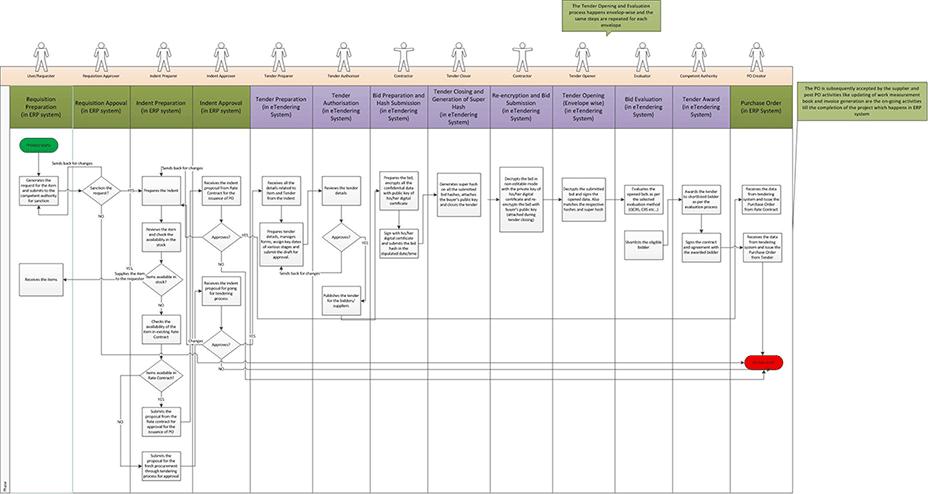The World Bank continues to drive positive change in the developing world through its commitment to e-Government Procurement (eGP). The transition to more transparent and effective procurement isn't a simple process. Experience shows that successful implementation requires a combination of people, process and technological change. With that framework in mind, what type of solutions are likely to deliver the best results?
Many developing countries are looking to Enterprise Resource Planning (ERP) solutions when it comes to implementing eGP which is often as a consequence of a state-wide roll-out and mirrors the way that an Enterprise would adopt the likes of SAP, Oracle or Microsoft ERP. When it comes to delivering eGP, ERP vendors tend to promote their procurement module as an extension of their ERP.
eGP and Change
eGP represents a relatively high-impact change programme with many and varied components. The World Bank itself has written extensively about how the greatest challenge with eGP is managing the process of change. These include the processes and policies that it embodies, the technology it is based on, security, transparency and anti-corruption concerns, and interaction with the private sector to successfully navigate and deliver effective purchasing and contracting performance.
Why do eGP Projects fail?
Only a minority of eGP projects are entirely successful. They are typically characterized by high expectations, high-profile and involve significant levels of change. Multiple studies have pointed to a number of factors in failed programmes. These include; resistance from government departments and lack of agreement within the wider team, over-emphasis on the technological side of the deployment, and rapid implementation without adequate testing or adjustment to local stakeholders and participants.
The United Nations Asian and Pacific Training Center report concluded that: "The most important challenge to overcome is realising that there is no one solution to fit every situation. Countries are characterised by vastly different political, economic, social and governance contexts, which require different approaches."
Choosing the Right Technology for Success
eGP should be seen as an ongoing process and it is important that the technology solution works for procurement teams, government departments and suppliers alike. Adaptability, scalability, integration and user interfacing have to be at the heart of the process. ERP makes sense as a government-wide business process platform. However, there are good reasons to consider alternative solutions when it comes to the subtleties and specifics of procurement – especially solutions that can integrate with ERP rather than standalone.
Evolution not Revolution
ERP tends towards inflexible, imposed processes and new ways of working. This type of 'big bang' approach to technology has mixed results and requires extensive programmes of training to support adoption and process change.
The Importance of User Adoption
There are good reasons – and real-world experience in India, Botswana and Mauritius – that support starting with a less disruptive solution that can be adapted to users and specific processes and then scale-up.
Delivering What is Actually Needed
Not only are you buying functionality you're not ready for (or may never use) with ERP vendors' solutions, you are buying into what SAP, Oracle or Microsoft assume is needed. Portals, workflow, contact management, auctions etc. – all of these need to be implemented in a way that makes sense to users.
Fraud Management and Security
Ensuring fair and transparent procurement is one of the central drivers of eGP. Procurement naturally involves both external parties as well as internal participants in the same process. However, ERP is very much focused on internal processes and, as such, assumes that all activities takes place 'behind the firewall'. Security and fraud-prevention are very much a minor concern – or not a concern at all – for ERP vendors.
Cost and ROI
ERP tends to require huge levels of investment. Once an organisation has invested in the platform, it has little leverage when it comes to taking additional modules such as procurement. It's also likely that adapting the 'out of the box' functionality is expensive and time-consuming. As a result, running costs and payback don't stack up.
Data-centric not Document-centric
Getting the technical solution right also means not implementing an overly-simple, document-centric solution that only allows the user to publish tender documents and electronically receive submission documents. Making the change to collecting tender responses as data (rather than documents) is a crucial step in gaining performance information and process automation. It also enables better integration with external systems – either now or in the future.
eGP and eProcurement represents a major opportunity to increase trust and deliver efficiencies for countries in the developing world. However, it is essential to take a more flexible and nimble approach to the technology that supports its implementation.
See Integrated Business flow chart of ERP and eTendering system below:

For additional information, please contact Gurcharan Singh, Senior Procurement Specialist, Transport and ICT GP
